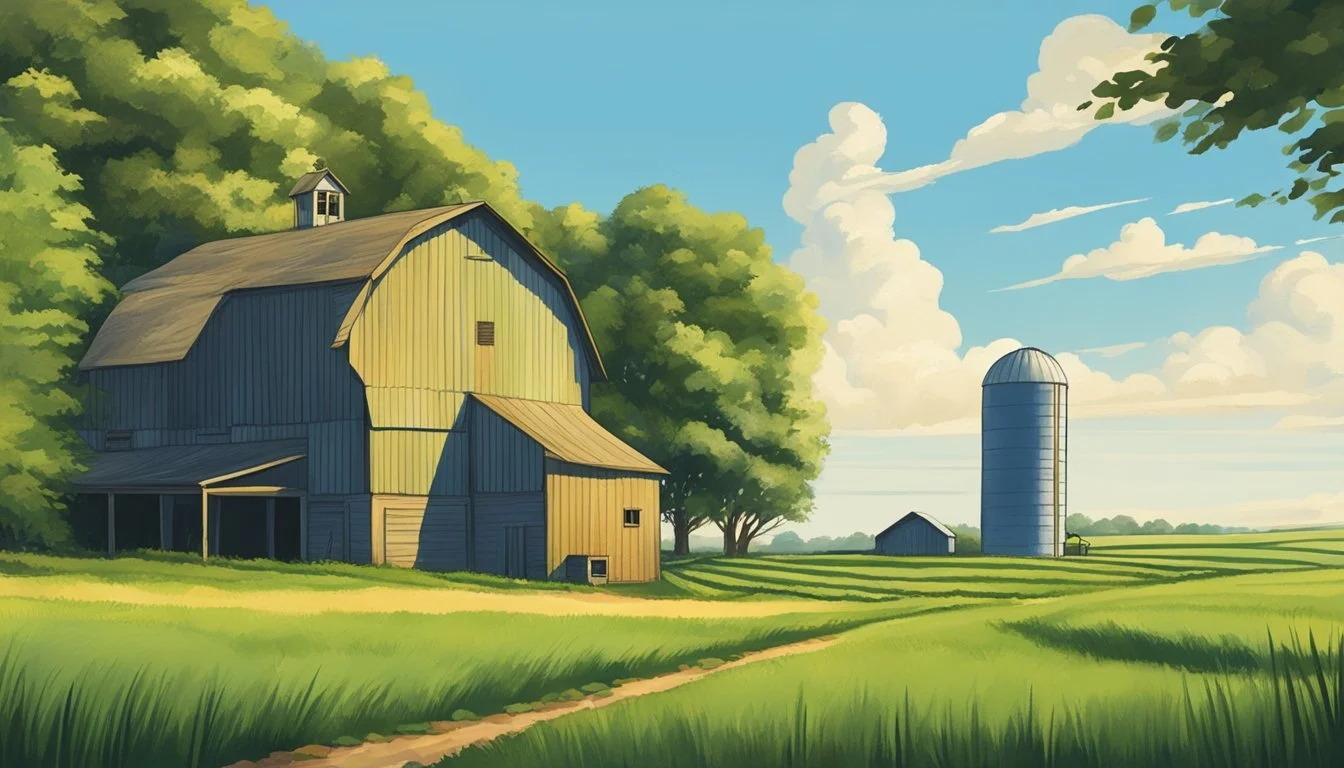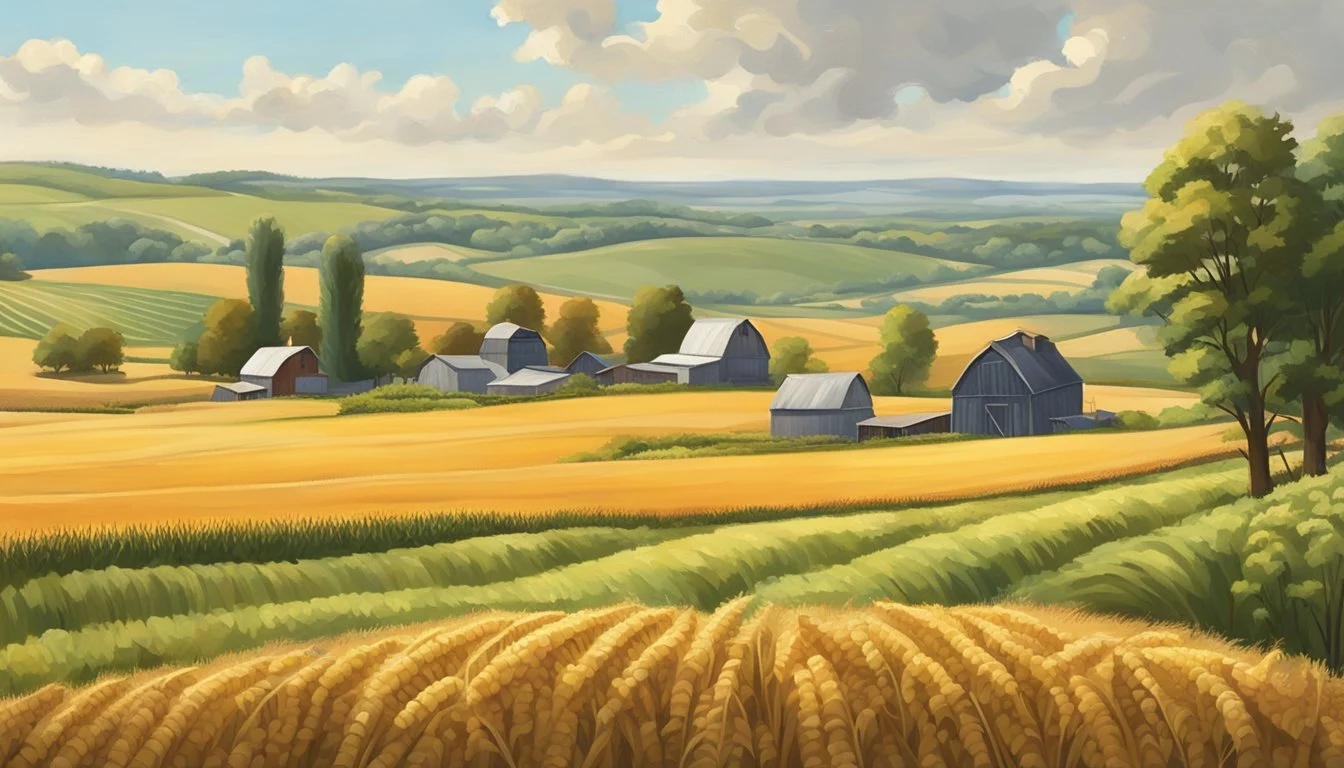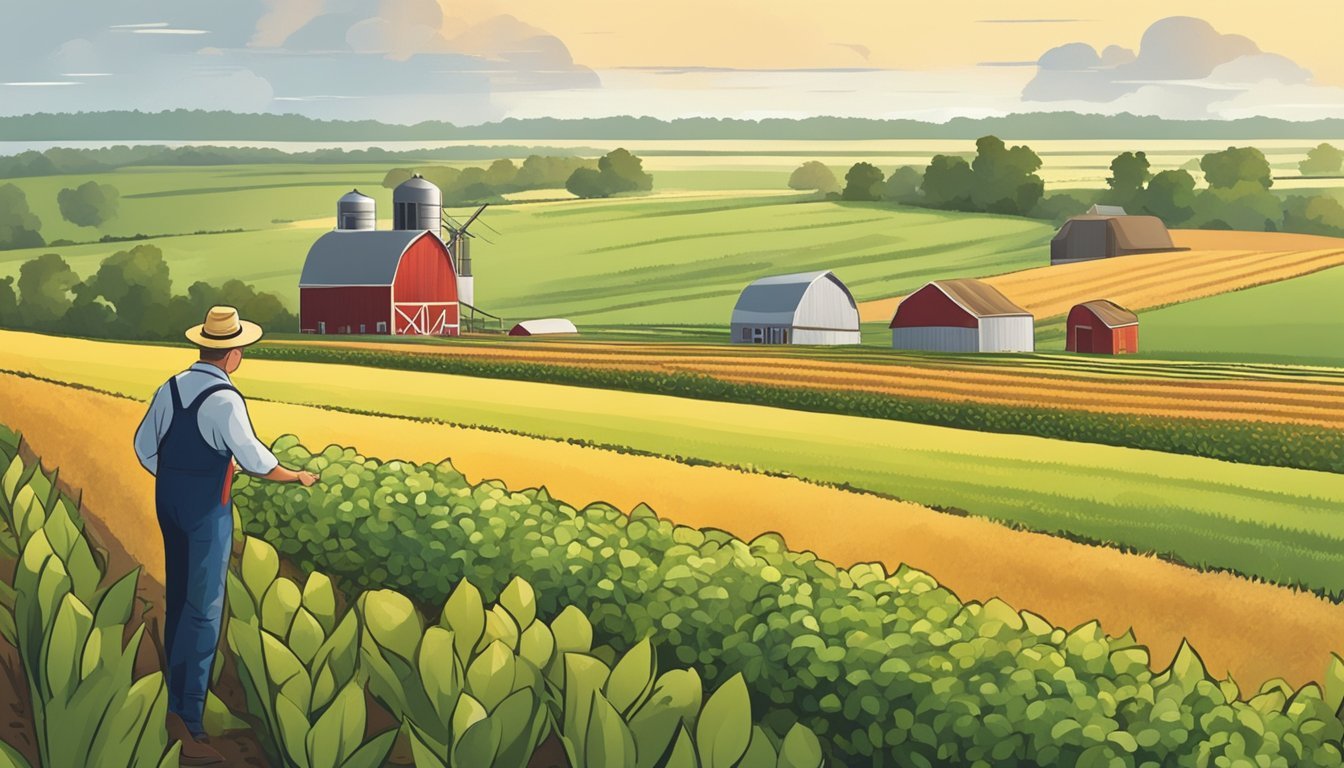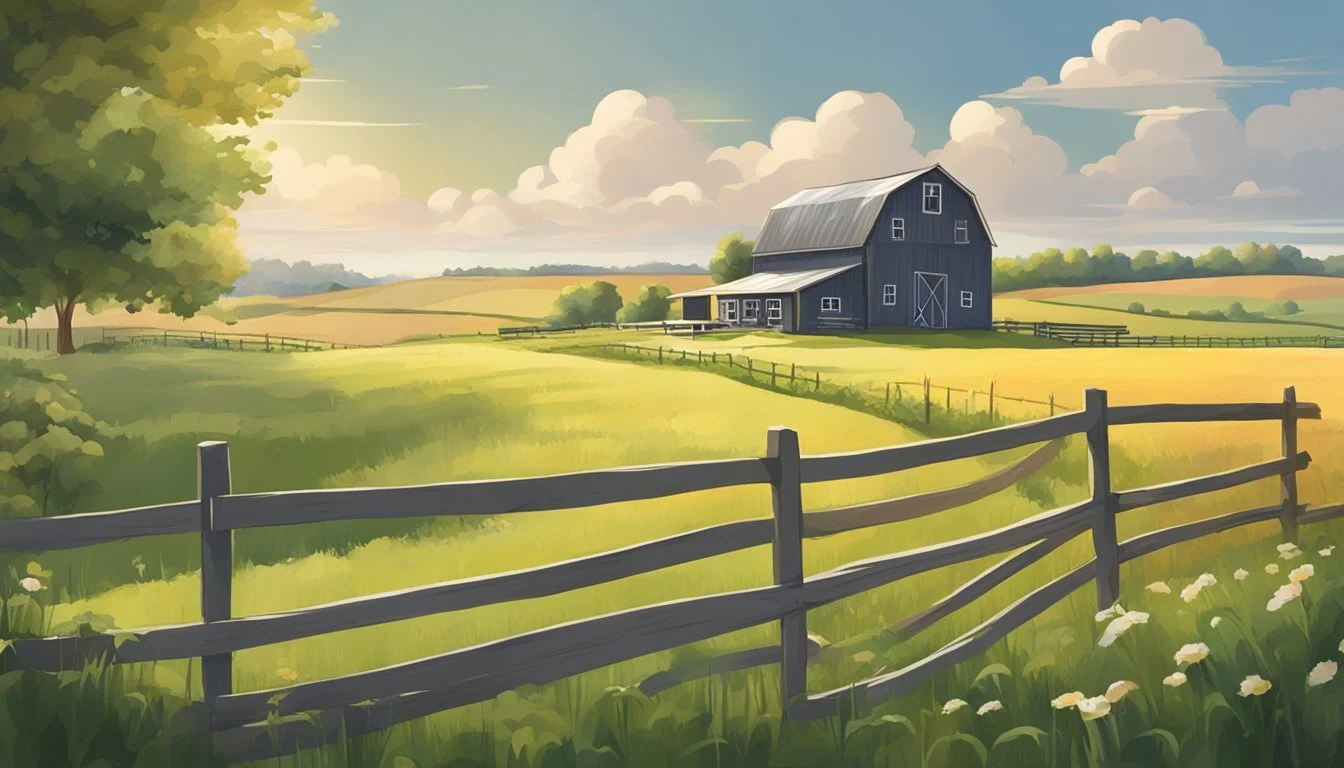Right to Farm Law in Illinois
Understanding Agricultural Protections
Right-to-farm laws serve as a shield for agricultural operations, providing farmers and ranchers with legal protections against nuisance lawsuits. In essence, these laws are designed to preserve and maintain the viability of farming and ranching activities. Illinois, like all fifty states, has its own version of right-to-farm legislation, which has been a part of its legislative fabric since 1981. The Illinois Farm Nuisance Suit Act, as it's formally known, attempts to strike a balance between agricultural practices and the concerns of non-farming residents who may move into rural communities.
The Illinois statute acknowledges the critical importance of farming to the state and aims to prevent legal disputes from escalating into threats against the agriculture industry. As urban and suburban development extends into traditional farming areas, tensions can arise between new residents and established agricultural operations. Right-to-farm laws in Illinois aim to preemptively address these tensions by limiting the circumstances under which farming operations may be deemed a nuisance, thereby giving farmers the confidence to invest in and operate their businesses without the fear of legal challenges.
However, despite these protections, Illinois has seen a decline in the number of farms and acreage devoted to farming since the law's enactment. The changing landscape has prompted discussions about the efficacy and fairness of the right-to-farm statute. Legal challenges continue to surface as the community dynamics evolve, reflecting the ongoing debate around the relationship between farming operations and the rights of neighboring residents.
Historical Context
The evolution of Right to Farm laws in America, including specific developments in Illinois, is a reflection of the changing landscape of agriculture and urban expansion. These laws balance the needs of farming communities with the pressures of development and urban encroachment.
Origins of Right to Farm Laws
Right to Farm laws emerged in the United States in the 1970s, as a response to the growing conflicts between agricultural operators and non-farming residents. These laws were designed as legal shields for farmers, protecting them from nuisance lawsuits as urban development encroached on traditionally agricultural areas. This was a period when agricultural practices were increasingly under scrutiny from new residents unaccustomed to the realities of farming life.
Illinois Specific Developments
In Illinois, the Right to Farm Act (RTFA) was established in 1981, articulated within the Illinois Compiled Statutes. The Act was intended to discourage non-farm development on farmland and to protect farm operations from nuisance lawsuits that could arise from normal day-to-day farming activities. Despite the intentions of legislators, over time, the number of farms in Illinois has decreased, as well as the acreage of farmland—highlighting ongoing challenges despite the presence of RTFA protections.
Key Provisions of the Illinois Right to Farm Law
The Illinois Right to Farm Law is designed to protect farming operations by granting immunity from certain nuisance lawsuits.
Nuisance Lawsuit Protection
Under Illinois law, farming operations are afforded protections against nuisance lawsuits. This immunity is contingent upon the farm being established prior to any nonagricultural land uses in the immediate area. Should a newcomer move into an area where farming activities are already underway, they may not successfully file a nuisance lawsuit against the established operations.
Exceptions and Limitations
While the law provides broad protections, there are exceptions and limitations. The immunity from nuisance lawsuits does not apply in cases where the farming operation is found to be negligent or conducting illegal activities. Furthermore, the provisions of the law are subject to interpretation, and a farm must meet certain established criteria to qualify for the protections laid out in the Right to Farm Law.
Legal Framework
Illinois' Right to Farm laws establish a significant legal shield for agricultural operations, aiming to protect them from nuisance lawsuits as long as they are managed properly according to state laws. The legal intricacies of these laws are grounded in both statutory language and constitutional considerations.
Statutory Language and Interpretation
The Illinois Right-to-Farm Act is set forth in the Illinois Compiled Statutes under the citation 740 ILCS 70/0.01 to 70/5. The purpose of this legislation is to reduce the loss of farmland by providing a legal defense for agricultural operations that could otherwise be subject to nuisance lawsuits by neighboring landowners. The statutory language emphasizes that farmers holding to conventional and generally accepted practices are not to be considered nuisances, especially if the farm existed prior to surrounding non-agricultural developments. The Illinois General Assembly has amended these laws to adjust to contemporary agricultural needs and maintain relevance as the farming landscape evolves.
Key Provisions:
Short Title: Known as the Farm Nuisance Suit Act.
Legislative Policy: Aimed at protecting farm operations from nuisance claims.
Findings and Intent: Acknowledgment of the farm's importance and the need to provide certain protections.
Definitions: Clarifications of terms such as "farm" and "farm operation."
Application: Explanation of how the statute protects farms.
Constitutional Considerations
The constitutionality of Right to Farm laws in Illinois reflects a balancing act between private property rights and the state's interest in agriculture. The Illinois constitution does not explicitly guarantee the right to farm, yet these laws serve as a statutory interpretation of property rights in favor of agricultural interests. They align with the spirit of the constitution to sustain and encourage the agricultural sector amidst urban expansion and changing land uses.
Constitutional Facets Considered:
Due Process: Right to Farm laws are crafted to withstand challenges that they might arbitrarily restrict private property rights without due process.
Equal Protection: Ensures equitable treatment under the law, such that agricultural and non-agricultural interests are balanced.
Amendments: Amendments to these laws are passed through the Illinois General Assembly and are subject to constitutional review to ensure they do not infringe on fundamental rights.
These legal frameworks are crucial in protecting Illinois farming operations, navigating the complexities of agricultural practices, neighboring relationships, and evolving legislative landscapes.
Regional Application and Variations
The Right to Farm Laws in Illinois have specific regional applications and exhibit variations in comparison to other states. Local government involvement and comparative state laws highlight the unique ways these laws operate within Illinois.
Local Government Involvement
The role of local governments in Illinois is significant when it comes to enforcing Right to Farm Laws. They are tasked with balancing the interests of farmers and non-farming residents in rural areas, which can be a contentious process. Regulations may vary from one county to another, reflecting the differing agricultural priorities and community concerns.
Comparison with Other States
When examining Illinois' Right to Farm Laws against those of other states such as North Carolina, Wisconsin, Florida, and California, several variations become apparent:
North Carolina: This state's laws are designed to protect all agricultural operations from nuisance lawsuits, provided they were established before any changes in the land around them.
Wisconsin: Agriculture in Wisconsin enjoys similar protections, and the state law requires plaintiffs to prove that a farm is causing significant harm before any action can be taken.
Florida: Florida's Right to Farm Act provides robust protections to farms against nuisance lawsuits and places the burden of proof on the complainant.
California: California's version extends protection not only to agriculture but also to operations considered agricultural in nature.
Each state's legislation reflects its unique agricultural landscape, economic priorities, and population distribution between urban and rural areas.
Impact on Agriculture and Rural Communities
Right-to-Farm laws in Illinois are designed to protect agricultural operations from nuisance lawsuits and have multifaceted implications on local economies and environmental health in rural communities.
Economic Effects
Agritourism: Agritourism has emerged as a viable economic contributor, bolstering the income of family farmers and generating revenue for rural areas. Through the protection offered by Right-to-Farm laws, farmers feel more secure in investing in agritourism activities, knowing they are safeguarded against certain legal disputes that might arise from their operations.
Preservation of Farmland: These laws also aim to combat urban sprawl by preserving farmland and the rural character of local communities. By limiting encroaching development and protecting agricultural land use, Illinois's Right-to-Farm laws support the financial viability of family farms.
Environmental and Health Implications
Environmental Concerns: On the environmental front, while Right-to-Farm laws assist in maintaining the agricultural landscape, concerns persist over the implications of farming practices, such as the management of waste from livestock facilities, on local ecosystems. These environmental challenges demand continuous scrutiny and appropriate regulation to ensure sustainable farming that does not compromise local habitats.
Public Health: The health of local communities can be influenced by farming activities. While the Right-to-Farm laws have led to a reduction in nuisance lawsuits related to odors and noise, the potential impact of agricultural operations on air and water quality remains a topic of concern for residents and environmental health advocates. They call for a careful balance between farm protection and community health standards.
Current Issues and Case Studies
The landscape of agricultural law in Illinois, particularly the Right to Farm Law, grapples with evolving legal challenges and the anticipation of future prospects due to changing conditions. These developments underscore the ongoing tension between farming operations and neighboring interests.
Recent Legal Challenges
Legal challenges in Illinois have focused on nuisance suits where residents claim farm operations have negatively impacted their quality of life. The Right to Farm Law, designed to protect farmers, often serves as a shield in these disputes. However, Smithfield Foods, a notable large-scale farming operation, has faced legal action with claims that their expansive hog farming activities constitute a nuisance. Illinois courts continue to see a balance of interests between protecting agriculture and addressing the complaints of affected residents.
Changed Conditions and Future Prospects
The state of family farms in Illinois has significantly changed over the years. While the Right to Farm Act was intended to safeguard these enterprises, there has been a marked decrease in their number and the acreage they cover. This shift prompts questions about the law's effectiveness and its adaptability to changed conditions. With the governance surrounding agricultural practices facing scrutiny, future prospects hinge on how legislation will address the evolving landscape of agriculture, ensuring balance and fairness for all parties involved.
Supporting Resources
For a comprehensive understanding of Illinois's Right-to-Farm Law, various publications and organizations provide practical research and expertise. These resources offer invaluable assistance to farmers and legislators dealing with agricultural legal matters.
Research and Publications
Researcher insights and studies play a pivotal role in shaping the dialogue around agriculture law. Publications by entities like the National Agricultural Law Center provide in-depth analysis and legislative policy reviews. For up-to-date research, scholars and legal experts frequently publish in agriculture law journals and bulletins.
The National Agricultural Law Center: A key source for research publications that cover a broad spectrum of agricultural legal issues.
State Department of Agriculture: They often release reports reflecting on the impact of agriculture laws and provide resources for farmers navigating legal landscapes.
Agricultural Organizations and Support
Agricultural organizations offer support and work closely with researchers and the Department of Agriculture to safeguard farmers' interests. These entities are instrumental in ensuring the right-to-farm laws function as intended.
State-level support: Local agricultural organizations in Illinois provide resources and legal training tailored to the state's right-to-farm laws.
National support: Organizations with a broader perspective, such as the American Farm Bureau Federation, offer additional resources and national context for Illinois's legislation.
Conclusion
Legislation affecting Illinois agriculture has had to adapt to contemporary challenges, reflecting the changing landscape of farming operations.
The Role of Right to Farm Laws in Modern Agriculture
Right to Farm laws in Illinois serve a dual purpose: they protect farmers' rights while acknowledging the evolving trends in agriculture. These laws, officially known as the Farm Nuisance Suit Act, aim to limit nuisance lawsuits against farming operations. They ensure that farmers can operate without the constant threat of litigation that might arise from the customary noises, odors, and dust associated with agriculture. The legislature's policy has historically centered on sustaining the viability of farmlands for future generations.
Trends in modern agriculture show a decrease in farm numbers, yet there is an ongoing need to preserve agricultural endeavors. The Right to Farm laws provide farmers with a sense of security, encouraging them to continue their vital role in food production. In a state where farmland has decreased by 6 percent, these laws become even more critical.
As these laws continue to be examined and potentially amended, they represent Illinois's commitment to balancing the needs of farming communities with the interests of their non-farming neighbors. This legal framework is pivotal in promoting harmonious coexistence, while simultaneously fostering the growth and sustainability of agriculture as a cornerstone of the state's economy. Agricultural trends are closely monitored to ensure that legislation remains relevant and effective in supporting farming operations.
Appendix
The Appendix provides detailed resources for understanding the Right to Farm laws in both Illinois and a broader state context. These resources include a chart that compares Right to Farm laws across states, and a comprehensive list of the Illinois Compiled Statutes pertaining to the state's Right to Farm Law.
Chart of State Right to Farm Laws
State Citation Key Provisions Illinois 740 ILCS 70/0.01 to 70/5 Protection against nuisance suits for farms in compliance with existing regulations and practices. [Other States] [Various Citations] [Diverse provisions specific to each state's agriculture and nuisance laws.]
This chart serves as a compilation of state laws that provide a quick reference to understand how Right to Farm legislation varies across different jurisdictions.
Illinois Statutes Reference List
740 ILCS 70/0.01: Short title as the Farm Nuisance Suit Act.
740 ILCS 70/1: Legislative policy to promote agricultural continuity and prevent farm loss.
740 ILCS 70/2: Definitions within the Act.
740 ILCS 70/3: Restrictions on who may file nuisance suits and conditions.
740 ILCS 70/4: Limitations on legal actions against farming operations.
740 ILCS 70/5: Specific details regarding the time frame of operations and protections afforded.
These statutes collectively define the specific details and protections under the Illinois Right to Farm Law, aiming to support the agricultural industry and minimize conflicts with non-farming land uses.











